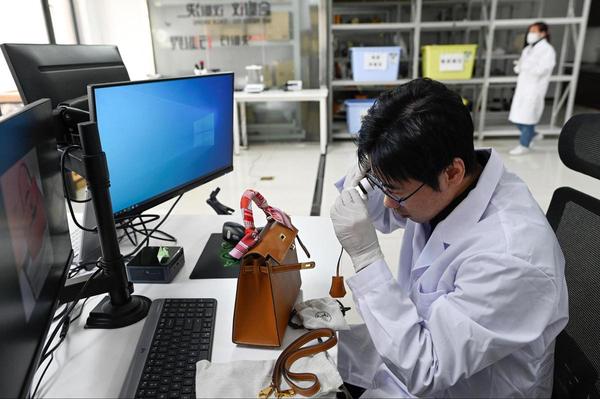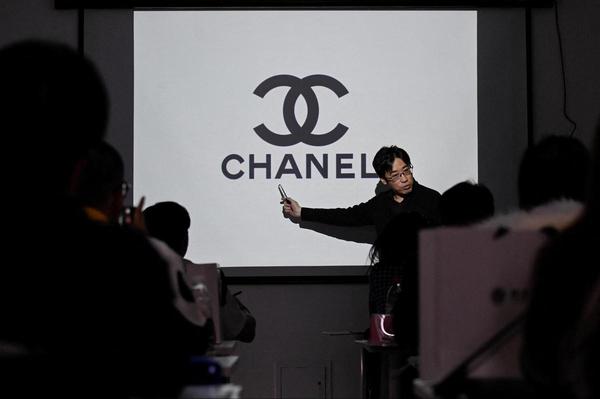Luxury: the fake detector, angel of the second-hand market in China

(AFP) - It's the world's leading market for luxury -- and also for counterfeit products. As the second-hand trade finally takes root in China, the expertise of a copycat scout is gaining in value...in the form of small, well-priced courses.
A Swiss watch, a Hermès bag or rubber boots stamped Prada. Using a magnifying glass, Zhang Chen carefully examines logos, stitching and serial numbers to tell the real from the fake. Mr. Zhang, who founded his own establishment in Beijing: the Commercial School of Major Luxury Products. The man dispenses his expert advice on phony handbags in front of a packed class. Price of the seven-day course: 15,800 yuan (2,000 euros). A price that is worth it according to Zhang Chen, if you want to survive in a booming second-hand market. The Chinese luxury market represents the astronomical sum of around 4,000 billion yuan (500 billion in euros), according to market research firm UIBE Luxury China. But the market for second-hand goods is also taking off. It remains modest in comparison -- just 17.3 billion yuan (a little over 2 billion euros) -- but it almost doubled between 2019 and 2020, according to the firm Forward Business Information. "The Chinese buy a third of the luxury goods sold in the world, but their resale rate, at 3%, is much lower than the 25% to 30% observed in Western countries", puts Zhang Chen into perspective.- Recycling counterfeiters -

For those who take the plunge, knowing how to recognize imitations is essential to avoid scams. "The lining of a black Chanel handbag must be pink", says the professor to his students, young men and women who listen attentively. Under an ultraviolet lamp, the trainees examine the serial numbers of the French brand. "The secret is that there are two letters that shine", explains the specialist , himself become a luxury expert in Japan. Knowing how to distinguish the font of a logo can make it possible "to recognize a third of the copies on the market", he adds. For Xu Zhihao, a 31-year-old trader, investing second-hand seems like a good deal, as potential customers are ready to afford the object of their dreams without spending too much. "A beautiful bag can be resold very well", assures the young man, who judges the market "similar to the financial products that I currently sell". a Gabrielle handbag from Chanel easily keeps 60% to 70% of its value.- Ten seconds are enough -
The products must of course remain in good condition. "Be careful of the marks left by the nails", says Zhang Chen. "Manicures are popular at the moment". Among his students, the teacher has spotted former counterfeiters, but he is reassured: they come to retrain in honest trades. Zhang Chen assures that he does not need any general only 10 seconds to determine whether a product is genuine or not. In addition to these courses, the expert provides online diagnostics. Some customers send him photos of watches or clothes so that he can decide. But the profession is changing and the big brands are relying on technology to defend their products, which some have started to equip with electronic chips to guarantee their origin. In Beijing, the expert Zhang does not fear finding himself unemployed. “All technology has its Achilles heel,” he philosophizes. "The market for the identification of luxury products will always exist, even if the methods will have to adapt".
- Prev
- Next







